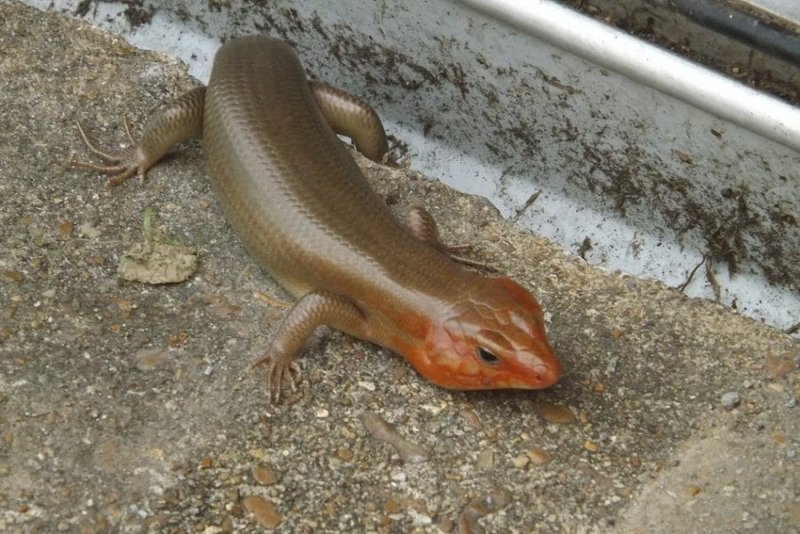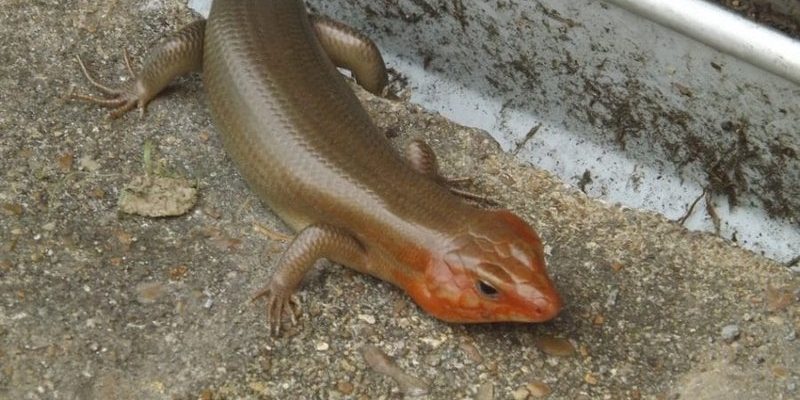
Now, you might be thinking, “Do skinks even pose a threat?” Honestly, it’s a valid question. Many species are harmless and skinks make great pets, yet there are always exceptions. Just like how some folks have reactions to cats while others cuddle with them without a second thought, it’s important to know more about these little reptiles and how they interact with humans. So, let’s dive into the world of skinks and untangle the facts.
What Are Skinks, Anyway?
Skinks belong to the family Scincidae and can be found all over the world, from burrowing underground to climbing trees. They come in various sizes and colors, with some even possessing striking patterns that resemble jewels. Generally, they’re small to medium-sized, with some reaching up to a foot in length.
You might wonder how these lizards differ from other types. For example, skinks tend to have elongated, smooth bodies, unlike their spiny counterparts. They also have reduced limbs, almost giving them a snake-like appearance, which can be a bit startling if you encounter one unexpectedly!
Many people have an affectionate view of skinks. They’re often seen as harmless creatures, scurrying around gardens and parks. Unfortunately, not all skinks are so friendly. Let’s take a closer look at the factors that influence whether skinks can be dangerous.
Are There Venomous Skinks?
You might be curious if any skinks possess venom that could potentially harm humans. Here’s the thing: most skinks are completely harmless. However, there is one noteworthy exception—the *Echinoseius skink*, which is believed to have a mild venomous bite. Don’t let that scare you! Even in these cases, the bites are rarely serious and are more akin to a bee sting.
To put it in perspective, think of your typical house cat. Most are friendly and cuddly, but if you really annoyed them, they could scratch or bite. Similarly, most skinks won’t bother you unless they feel threatened. When they do bite, it’s more about self-defense than aggression.
In general, the risk of encountering a venomous skink is low, and most species don’t even have the ability to deliver a harmful bite. So, if you’re out in nature and spot a skink, you can observe it from a safe distance without much worry.
Potential Risks from Skinks
While they’re usually gentle, there are a few risks associated with skinks that you should know about. First off, if you handle a skink and its skin comes into contact with any open wounds, there’s a slight possibility of infection. Their skin can host bacteria just like any other animal. Although rare, it’s worth keeping in mind if you’re prone to cuts or scratches.
Another potential issue arises if you’re an allergic individual. Some people might experience a reaction to the proteins in a skink’s saliva or skin. So, if you or someone around you has a history of animal allergies, it’s better to admire these little guys from afar.
Lastly, the biggest risk would be if they are handled improperly. Imagine grabbing a startled skink; it might try to escape by biting. Just as you wouldn’t handle any wild animal without caution, the same applies to skinks. Respect their space, and they’ll happily go about their little lizard lives.
The Importance of Skinks in the Ecosystem
Skinks may be cute and seemingly harmless, but they play an important role in their ecosystems. They’re typically insectivores, munching on pests like ants, beetles, and termites. By keeping these populations in check, skinks contribute to the overall health of their environments.
This pest control role is vital, especially in gardens or agricultural lands, where these tiny creatures can help reduce crop damage. When we think about interactions in nature, it’s easy to overlook the little guys. Yet, they undoubtedly have a significant impact on their surroundings.
So, next time you see a skink basking in the sun or darting around your backyard, remember it’s not just a pretty face! It’s an essential part of the local ecosystem, doing its part to maintain balance.
How to Handle a Skink Safely
If you find yourself in a situation where you can handle a skink, whether as a pet or in a controlled setting, here are a few pointers to do so safely.
- Wash Your Hands: Before and after handling, wash your hands to minimize bacteria transfer.
- Be Gentle: If you need to pick one up, do it slowly and gently. Avoid sudden movements that can startle the skink.
- Use Caution: Always observe the skink’s body language. If it seems stressed or tries to escape, give it space.
- Keep it Safe: If you’re letting one go, do so in a safe environment away from busy roads or predators.
Following these guidelines will help ensure a safe experience for both you and the skink. It’s all about respect and mindfulness!
Skinks in Human Culture
You might be surprised to learn that skinks have a special place in various cultures around the world. In some regions, they symbolize resilience and adaptability due to their vibrant survival skills. Their unique appearance often makes them a favorite subject in art, folklore, and even tattoos.
For instance, in Māori culture, the skink is seen as a creature of wisdom, often associated with the earth and nature. This connection emphasizes their importance in maintaining ecological balance, showing that cultures recognize these little lizards for their contributions to the environment.
So whether you’re admiring their beauty or appreciating them as a cultural symbol, skinks truly are fascinating creatures—even if they might not seem so dangerous after all.
To wrap up, skinks are generally not dangerous to humans and play helpful roles in our ecosystems. While they might have an isolated case of venom or cause mild reactions, the vast majority are completely harmless. If you respect their space and handle them carefully, there’s really no need to worry.
Next time you spot a skink, consider the valuable part it plays in nature. These little lizards are not just scaly beings; they’re amazing creatures that contribute positively to their environments. So when you think of skinks, think of them as friendly neighbors who prefer to live their lives quietly—and harmlessly!

